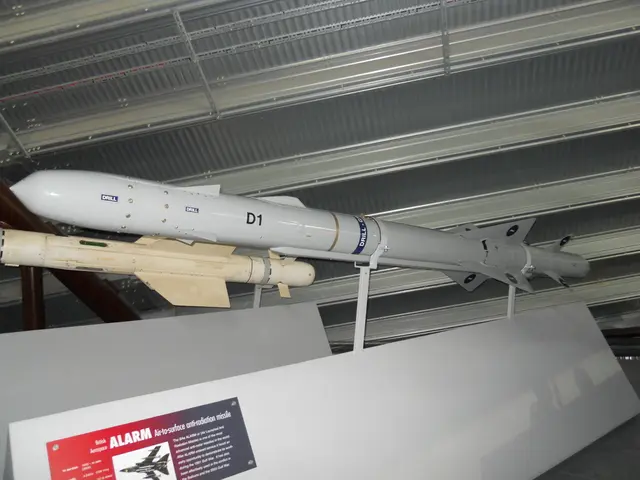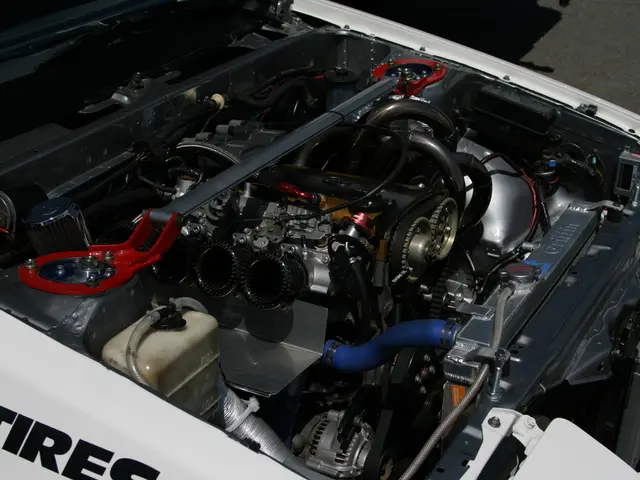Practical Effects of Creating Artificial Intelligence and Enhanced Reality in the Real World
Title: Unraveling AR & AI: Separating Hype from Reality for Manufacturing Success
Date & Time: June 3, 2025, 12:00 PM ET / 11:00 AM CT / 9:00 AM PT / 5:00 PM GMT
Duration: 60 Minutes
Primary Sponsor: Dassault Systèmes
Already registered? Click here to log in.
In this session, we'll delve into the practical applications of augmented reality (AR) and artificial intelligence (AI) systems in the manufacturing sector, shifting the focus from marketing buzz to real-world problem-solving.
Join us as we dissect the true impact of these technologies when it comes to streamlining manufacturing processes, improving efficiency, and boosting adaptability in industrial equipment manufacturing.
During this enlightening discussion, you'll:
- Uncover the hidden powerhouses of AR and AI, learning from genuine customer success stories and their game-changing use cases.
- Gain first-hand insights into tackling challenges like inefficiency, inaccuracy, and lack of adaptability in industrial equipment manufacturing, all positively influenced by these innovative technologies.
- Obtain actionable advice to help you determine if integrating AR and AI systems is the right investment for your business.
Host
Mike Bradford | Director - DELMIA Strategic Business Development and Marketing | Dassault Systèmes
Mike Bradford boasts over 30 years of experience in Manufacturing and Information Technologies across various roles. With expertise in Management Consulting, Software Consulting, Business Ownership, and part-time college instruction, Mike has also contributed to numerous industry workgroups, spoken at industry workshops, and published in several trade magazines.
Join us for an engaging exploration of AR and AI in manufacturing, demystifying the hype to make informed decisions for your business. Reserve your spot today!
Real-World Successes of AR & AI in Industrial Equipment Manufacturing
Augmented Reality (AR) Successes
- Airbus
- Use Case: Guiding workers through complex assembly tasks using Microsoft HoloLens 2 AR glasses.
- Insight: Enhancing efficiency, accuracy, and safety by providing visual data points and step-by-step instructions.
- Siemens
- Use Case: Combining AR with digital twin data to aid workers in aligning complex components.
- Insight: Simplifying training, boosting confidence, and standardizing procedure execution.
- BMW
- Use Case: Transforming inventory processes with AR glasses in its Munich plant.
- Insight: Reducing inventory identification time and error rates, optimizing operations, and improving accuracy.
- ASML and Applied Materials
- Use Case: Employing AR service guides for electronic production equipment maintenance.
- Insight: Shortening repair cycles, reducing errors, and ensuring proper equipment maintenance.
Artificial Intelligence (AI) Successes
- Whirlpool
- Use Case: Automating assembly line operations and quality control inspections with Robotic Process Automation (RPA) bots.
- Insight: Streamlining operations, maintaining high product quality, and verifying quality assurance.
- Demand Prediction
- Use Case: AI-driven demand prediction using historical sales data, market trends, and external factors to minimize stockouts and excess inventory.
- Insight: Making more informed decisions and efficiently optimizing inventory levels.
Actionable Insights
- Seamless Integration: Optimize productivity by integrating AR and AI technologies with existing manufacturing systems effectively.
- Worker Training & Upskilling: Ensure comprehensive training for staff, empowering them to maximize the benefits of AR & AI technologies for enhanced productivity.
- Continuous Monitoring & Improvement: Regularly review AR & AI implementations, identify areas for enhancement, and optimize processes accordingly.
With these strategies and technologies in place, industrial equipment manufacturing companies can enhance operational efficiency, accuracy, and competitiveness in the market.
- The upcoming session, 'Unraveling AR & AI,' will explore the practical applications of augmented reality (AR) and artificial intelligence (AI) systems in the manufacturing industry, focusing on real-world problem-solving.
- Airbus, Siemens, BMW, ASML, and Applied Materials are among the companies that have already experienced success with AR, streamlining assembly tasks, optimizing operations, and reducing errors.
- Whirlpool, on the other hand, has leveraged AI for automating assembly line operations and quality control inspections, leading to streamlined operations and high product quality.
- To make the most of these technologies, industrial equipment manufacturing companies can integrate AR and AI solutions seamlessly with existing manufacturing systems, train and upskill their staff, and continuously monitor and improve their implementations.
- By implementing these strategies and utilizing innovative AR & AI technologies, manufacturing companies can boost their efficiency, accuracy, and competitiveness in the industry, ultimately leading to increased productivity.










